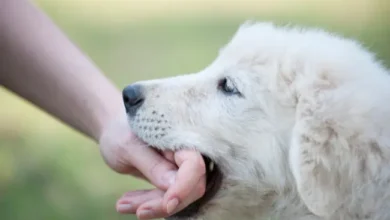
Each year, over 4.5 million people in the United States experience dog bites. Despite their status as cherished companions, dogs can cause serious concerns about liability and compensation in the event of an incident. What conditions, then, classify an incident as a “dog attack” in legal terms?
Figuring Out “Dog Attack” in Legal Contexts
Legally, a dog attack is defined as any situation where a dog inflicts harm through biting, scratching, or other injuries to a person or another animal. This includes incidents where individuals are knocked down or hurt while fleeing an aggressive dog. The legal nuances of dog attacks can vary by state, making it essential to seek localized legal advice.
A Newport Beach dog attack lawyer simply states that the owner of the dog is liable for the damages suffered by the person bitten, regardless of whether it’s in public or private places. But before you make any assumptions, it’s essential to grasp the complexities of this matter to protect your rights and seek appropriate action.
Types of Dog-Related Incidents
Dog-related incidents primarily include bites and aggressive behavior. While bites are clear-cut cases, non-physical aggression like growling or lunging also constitutes threatening behavior, potentially leading to claims. Additionally, dogs causing individuals to trip or fall, even indirectly, can lead to compensable injuries.
Establishing Liability in Dog Attacks
Liability typically falls on the dog’s owner, underpinned by the principle that owners are responsible for their pets’ actions. In certain scenarios, caregivers or property owners may share liability if their negligence contributed to the attack. Understanding varied state laws is crucial in navigating liability and compensation claims.
Factors Affecting Damages Claims
The damages awarded in dog attack cases hinge on several factors:
- Severity of Injuries: More serious injuries generally lead to higher compensation.
- Owner’s Negligence: Greater negligence by the dog owner, such as failing to restrain a known dangerous dog, can increase the compensation amount.
- Jurisdictional Laws: State-specific laws on dog attacks influence the compensation outcomes.
Steps to Take After a Dog Attack
Immediate priorities include seeking medical attention and gathering information about the dog and its owner. Documenting the incident through photos and medical records strengthens future claims. Reporting the attack to local authorities prevents future incidents and is a step towards legal recourse. Consulting with a legal professional specialized in dog attacks can offer guidance on rights and compensation avenues.
Understanding the Impact of Dog Bite Scars
A severe dog bite can inflict both visible and hidden wounds. While internal injuries mend out of sight, external damage may leave a lasting mark: scars. These scars are not only physical reminders of a traumatic event but can also pose emotional and social challenges.
The Varied Nature of Dog Bite Scars
Dog bite scars are often irregular due to the shape of a dog’s mouth and teeth, featuring jagged edges, skin pitting, or color variations within the same area. Their conspicuous nature can invite unwanted attention and questions, even years after the incident, making them particularly hard to conceal. Facial scars, a common outcome for children, are especially difficult to live with due to their visibility and the emotional impact they can carry.
The Formation of Scars Post-Dog Bite
The skin’s healing process kicks into gear following an injury, working to repair and close wounds. This process involves the production of collagen, a protein critical for the resilience of skin, muscles, and bones. Initially, a scar might present as a dark or reddened area, potentially itchy or sensitive to touch. Several factors influence a scar’s development, including the wound’s severity and location, treatment received, and the individual’s health and genetic background.
Types of Scars Resulting from Dog Bites
Fine-Line Scars: These scars are initially raised but flatten over time, potentially changing color. They are common and often become inconspicuous.
Keloid Scars: Characterized by their raised, expanding nature beyond the injury site, keloid scars can impair movement and cause significant emotional distress, particularly for individuals with certain genetic predispositions.
Hypertrophic Scars: Similar to keloids but confined to the injury site, these scars are raised and may flatten somewhat over time but never fully disappear.
Pitted or Sunken Scars: These scars create depressions in the skin and can become more pronounced with aging as the skin loses collagen and elasticity.
Scar Contractures: Often following burns, these scars tighten the skin, potentially restricting movement, especially if over joints or deep enough to affect muscles or nerves.
Navigating Life with Dog Bite Scars
Living with dog bite scars involves physical and emotional healing. Initial medical treatment is crucial, as is following care instructions to minimize scarring. However, scars can change and develop for up to a year post-injury, affecting one’s appearance and self-esteem.
For those struggling with the visibility or physical limitations of scars, treatments range from early intervention (e.g., antibiotics, creams) to more invasive options like surgery or laser resurfacing, aimed at reducing scar tissue or improving mobility. Emotional support through therapy can also play a crucial role in recovery, offering a space to process the trauma and work towards mental well-being.
Seeking Legal Counsel
If a dog bite has impacted your life, consulting with an experienced injury lawyer can provide clarity and support. Legal expertise can guide you through the process of understanding your rights and options for compensation or treatment, helping you and your loved ones move forward after such a traumatic event.
What to Do After a Dog Bite: Friendly Advice
Getting bitten by a dog is not only scary but can also leave you with a bunch of questions and concerns, especially about what to do next. Let’s break it down into simpler terms and see how you can handle this situation in a way that looks out for you both health-wise and financially.
To Sue or Not to Sue?
After a dog bite, you might be dealing with injuries, medical bills, and a whole lot of stress. It’s worth thinking about whether you need to take legal action against the dog’s owner. Chatting with a personal injury lawyer is a great first step. They can help you figure out if you should file an insurance claim or if suing is a better path, especially if your expenses are piling up and the insurance company isn’t playing ball.
What’s Your Claim Worth?
When it comes to what you can ask for in terms of money, there are two main buckets: the costs you can tally up (like doctor’s bills and missed work) and the tougher-to-quantify stuff (like the stress or scars left behind). If, heaven forbid, the worst happens and someone dies from a bite, there’s also the option to file a lawsuit for wrongful death. And, depending on where you are, you might even be able to press charges against the dog’s owner.
Watch the Clock!
In places like South Carolina, you’ve got three years from the bite to decide to sue. It might seem like plenty of time, but it flies by, especially when you’re trying to heal and maybe even negotiating with insurance companies. Missing that deadline could mean you lose your chance to sue. Getting a lawyer who knows the ins and outs of dog bites can really help keep you on track.
Bites to the Face – Ouch!
Dog bites can happen anywhere on your body, but when they’re on your face, they’re especially tricky. Besides the obvious pain, there’s the risk of nerve damage and the likelihood of scars that might need surgery to look better. Sadly, you can’t always make scars vanish completely, leaving you with a lasting reminder of a very bad day. This can be super tough emotionally, for kids and adults alike.
Treating Those Scars
Right after a dog bite, getting medical help is key to make sure you heal up as well as possible and keep scarring to a minimum. If you do end up with scars, there are treatments like laser therapy that can make them less noticeable, and even surgery to make the scar smaller or less visible. Remember, healing takes time and patience, and it’s totally normal to feel upset about scars and what happened.
Will Insurance Help?
If you’re worrying about the cost of treatment, you might wonder if insurance will cover it. If the bite happened at someone’s house, their homeowner’s insurance might pay for your treatment. But it’s tricky because some insurance policies have rules about dog bites, like only covering the first incident or not covering bites from certain dog breeds. It’s a bit of a maze, but it’s worth exploring all your options to help pay for your care.
In a nutshell, dealing with a dog bite involves looking after your health, figuring out the financial side, and possibly getting legal advice. It’s a lot, but taking it step by step can make a huge difference in handling the situation in a way that’s best for you.
Conclusion
Understanding what constitutes a dog attack and how liability is determined is crucial when seeking damages. The incident’s severity and the dog owner’s actions significantly influence the claim. Following a dog attack, taking appropriate steps ensures the protection of rights and the pursuit of due compensation. For specific situations, seeking legal advice is highly recommended to navigate the complexities of dog attack claims.



